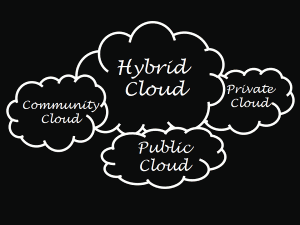There are a couple of reasons why a hybrid SharePoint implementation is the preferred direction for most businesses. Foremost, the integrated services of on-premise and online implementation solves most limitations of Office 365; and also caters to legal and industry requirements on compliance, security and data sovereignty. Other than this, it makes business leverage its existing on-premise SharePoint implementation to enforce identity management such as single-sign-on (SSO).
If you have decided to implement a hybrid approach to your SharePoint solution, there are top three things that you must consider:
First, know how you will deploy your SSO
Your single sign-on implementation is crucial in doing a hybrid design. First, it eliminates the burden among users to log-in to multiple accounts every time they navigate from your on-premise SharePoint to Office 365. In doing so, whenever people use their Office 365, they are using their Active Directory corporate credentials and apply the same security and access controls associated with their accounts. Coupled with a common navigation and user experience, a hybrid SharePoint implementation also allows users to access links to contents stored whether on-premise or the cloud.
 Second, know where you will run SharePoint workloads
Second, know where you will run SharePoint workloads
Because SharePoint workloads have similar technical architectures, oftentimes, they are dependent with one another. Knowing your workload can help in classification of running them on-premise, on the cloud or both. For instance, Lists, Document Libraries and Web Parts can be deployed both on-premise and cloud environment; the same goes with Blogs, Wikis, My Site, My Profile, Tags and Notes.
On the other hand, Sandboxed Solutions, Forms and Workflows operate in Office 365, but cannot connect directly to data in on-premise implementations. PerformancePoint and Dashboards only works on-premise; while only Excel Services and Visio Services are catered by Office 365.
Third, it is important to plan your information architecture
Knowing where to place your data (i.e. on-premise or the cloud), helps businesses to create a clear policy on data classification; and at the same time gives clear directions to users in terms of managing documents and other sensitive and proprietary information.
In classifying data, bear in mind some basic rules – first, similar content such as records policies, retention strategies and securities can be managed together. They can also be implemented to appear correctly in contextual navigation on the relevant environment. Also, data regardless of being on the cloud or on-premise must align to that environment’s enterprise metadata. Bear in mind that taxonomy terms cannot be shared between two different environments. Similarly, business solutions, customizations and dashboards that are specific to certain types of data should also be installed and managed in a single environment.
Remember, a SharePoint hybrid implementation can be a bit tricky if you are not well prepared and knowledgeable about its peculiarities. It is always best to seek the right solution provider to prevent mistakes, high costs and not to mention downtime that will impact operations. Portal Integrators can help you set-up your hybrid SharePoint environment. Our team of experts is just a phone call away.
